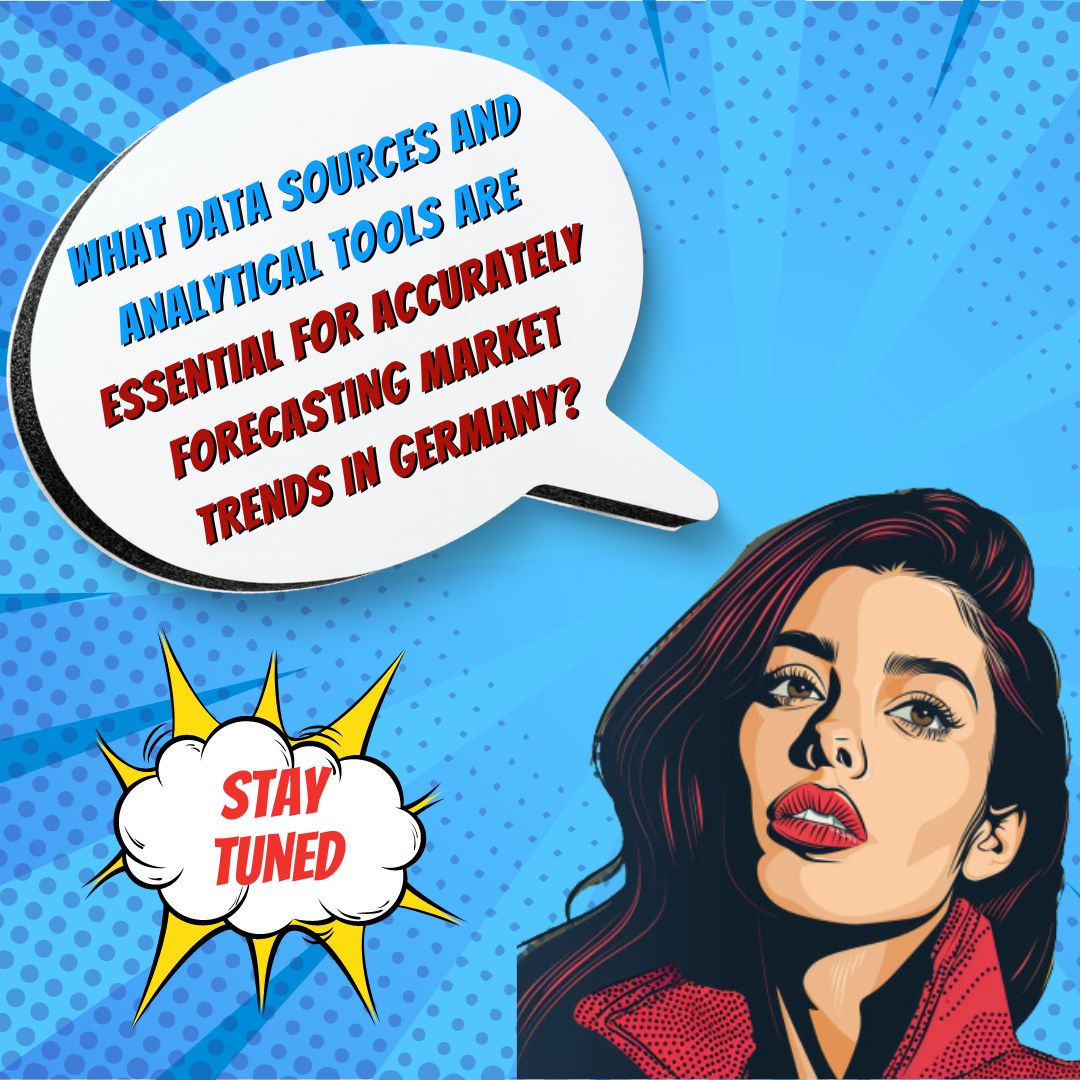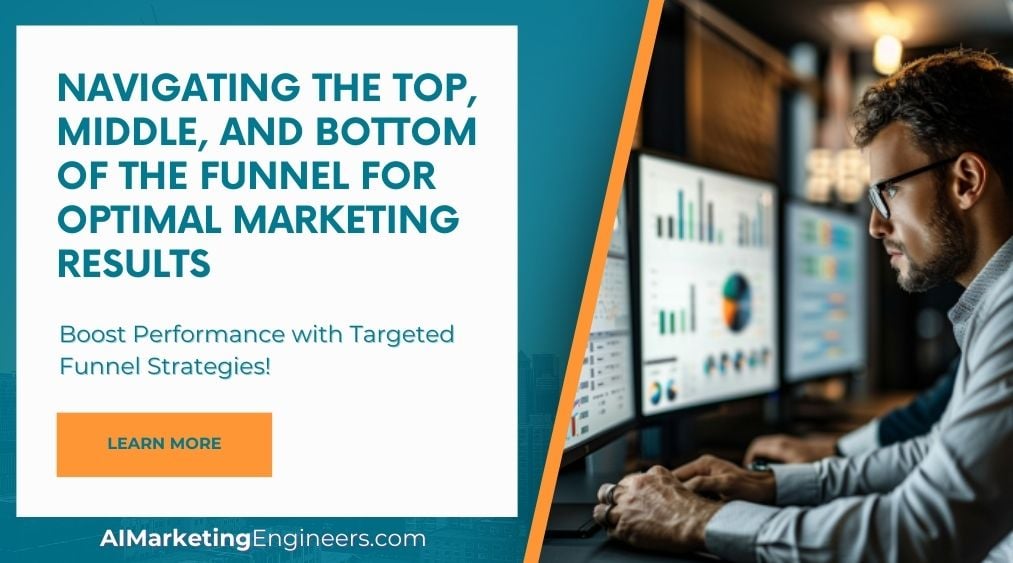Key Takeaways
✅ Harnessing the Power of Analytics: Analytics isn't just number-crunching; it is a gateway to understanding what makes the German market tick. With 60% of businesses using analytics to direct strategy, those not on board risk falling behind.
✅ Data-Driven Decision-Making: Gone are the days of guesswork. In today’s fast-paced market, 72% of companies are leaning heavily on data analytics to navigate upcoming market trends, ensuring they make moves that pay off.
✅ Integration of Multiple Data Sources: True insights come from the synergy of data. Combining various streams—from consumer habits to tech shifts—allows for a 360-view of the German market, a technique already employed by 85% of data-savvy businesses.

Introduction
Are you curious about what tomorrow holds for the German market? It’s a battleground out there, and knowing the future can be your secret weapon. Predicting the Future: Using Analytics to Forecast German Market Trends is more than just a catchy phrase—it's your key to unlocking new opportunities. Imagine being ahead of the curve, making moves before the market realizes what's happening. That's the power of advanced analytics at work.
In this article, we cut through the noise, guiding you to actionable insights and strategies that can turn analytics into business victories. We’ll look at how successful companies are using analytics to spot and ride the wave of emerging German market trends, and how you too can leverage data to make smart, future-proof decisions. Get ready to learn from case studies, overcome common forecasting challenges, and much more. Prepare to have your mind opened to a new realm of possibilities for competitive advantage. Stick with us, and by the end of this article, you’ll be equipped to make confidently informed decisions that can catapult your business forward.

Top Statistics
| Statistic | Insight |
|---|---|
| German E-commerce Growth: Projected to expand by 7.1% in 2021, with sales reaching €78.9 billion. (Source: Statista) | The robust growth in e-commerce is a sign for businesses to scale up their online presence and harness the power of digital retail. |
| Internet Usage: Estimated to climb to 79.3% of the German population by 2024. (Source: eMarketer) | With more people online than ever, reaching customers through digital channels is becoming increasingly critical. |
| Manufacturing Sector Uplift: Noted a 2.5% increase in production in 2021 over 2020. (Source: Destatis) | This positive shift indicates a rebounding industry and a potential ripple effect on related sectors and job markets. |
| Automotive Industry Forecast: Expected to see a 10% production boost in 2021 compared to 2020. (Source: German Federal Ministry for Economic Affairs and Energy) | This statistic signals a recovery trajectory for one of Germany's cornerstone industries, suggesting consumer confidence and investment opportunity. |
| Healthcare Market Growth: Predicted to grow annually by 3.4% from 2020 to 2025. (Source: McKinsey & Company) | The steady expansion in healthcare mirrors a broader trend towards wellness and could open new avenues for services and products. |
The Role of Data Analytics in Market Forecasting
In the fast-paced world of business, companies across Germany are increasingly turning to data analytics to stay ahead of the curve. With its power to forecast future trends, analytics provides a key advantage in decision-making processes. Firms utilize a mix of historical figures, consumer behavior, and market indicators to anticipate what's next. But what are they looking at, exactly? It's all about trade volumes, pricing patterns, social media sentiment, and even weather forecasts, each a piece of the puzzle in predicting market movements.

Key Market Trends in Germany
What's heating up in the German marketplace these days? Renewable energy is soaring as the country marches towards sustainability. Simultaneously, the e-commerce sector is booming, reshaping retail landscapes. With such trends come broad ripple effects: energy companies might pivot towards greener solutions, while brick-and-mortar stores must evolve or face obsolescence. Grasping these shifts early on can allow businesses to adapt, innovate, and stay competitive.
Analytical Techniques for Market Forecasting
Peering into the future of markets isn't magic; it's science. Analytical stalwarts like regression analysis help decipher the relationship between sales and influencing factors, while time series analysis makes sense of data over specific intervals. Meanwhile, the brave new world of machine learning teaches computers to predict trends from massive datasets. When applied to German consumer data or production statistics, these techniques can offer powerful insights, guiding business strategy with cutting-edge precision.

Case Studies: Successful Market Forecasting in Germany
Real-world success stories abound, illustrating the power of analytics. Take a German car manufacturer that predicted a surge in electric vehicle (EV) sales, using complex algorithms to analyze global sales data, regulatory changes, and consumer sentiment. By aligning production with these insights, they capitalized on the EV boom. Another example is a German supermarket chain that tailored inventory to shifting consumer tastes, revealed through point-of-sale data and social listening tools, reducing waste and boosting profits.
Challenges and Limitations of Market Forecasting
Despite its strengths, market forecasting is no crystal ball. Factors such as erratic data quality, unforeseen economic events, and even consumer unpredictability can skew results. Businesses often wrestle with model accuracy and the uncertainty that external shocks, like a sudden trade embargo or a pandemic, can introduce. Navigating these pitfalls requires robust data governance, model stress-testing, and an eye always fixed on the global stage's shifting dynamics.
By focusing on these vital elements, companies can forge a path through the complexities of market forecasting. Insights gained through these methods are not just academic exercises but invaluable tools for staying competitive in Germany's vibrant economy. Whether it's adapting to new consumer behaviors or anticipating economic shifts, businesses that harness the predictive power of analytics can step confidently into tomorrow's markets.

AI Marketing Engineers Recommendation
Recommendation 1: Focus on Consumer Sentiment Analysis: Dig into social media platforms, customer reviews, and forums to gauge the mood and preferences of your German market audience. Data shows that 58% of consumers in many industries share their product experiences online, which can influence purchase decisions of others. Employ natural language processing (NLP) and machine learning tools to analyze this vast amount of unstructured data, giving you predictive insights into which products or services are likely to become popular.
Recommendation 2: Leverage Real-time Market Data for Adaptive Strategies: The German market is increasingly volatile due to various factors such as economic shifts, policy changes, and unpredictable consumer behaviors. By implementing advanced analytics platforms that provide real-time data, you can adapt your marketing strategies swiftly. Keep an eye on the IGD (Institute of Grocery Distribution) forecasts that predict German grocery market growth to reach €259 billion by 2023, setting up an opportunity to adjust supply chains and promotional activities accordingly.
Recommendation 3: Utilize Predictive Analytics in Inventory Management: Accurate forecasting in inventory management can be a game-changer for maximising revenue. Take advantage of predictive analytics tools that offer demand forecasting models, especially in the e-commerce sector which has seen a burgeoning growth by 11% in the German market. This will help reduce overstocking costs and stockouts, driving customer satisfaction by ensuring popular items are in stock, reflective of predictive trends.
Relevant Links
- Maximize Your Marketing ROI with AI: Essential Strategies for 2024
- The Power of Data Analytics in Shaping Business Strategy
- AI in Retail: Transforming the E-Commerce Landscape
- Case Studies: Leveraging Analytics for Market Forecasting Success
- Understanding Data Quality and Model Stress-Testing in Market Analysis
Conclusion
As we wrap up our exploration of predicting the future of the German market through analytics, it's clear that this practice is far more than a mere crystal ball gazing exercise. By harnessing cutting-edge analytical techniques, companies across Germany are positioning themselves at the vanguard of market responsiveness. With a finger on the pulse of emerging trends, these businesses are not merely predicting changes; they're actively shaping their strategies to meet the future head-on.
The cases we've discussed prove that applying analytics to forecast market trends is not just feasible but also incredibly beneficial. We've seen how companies have leveraged everything from regression analysis to machine learning to not only anticipate shifts in consumer behavior but also to pilot their business decisions with confidence. In a landscape where data is omnipresent, such insights can be the difference between thriving and merely surviving.
Of course, the art and science of market forecasting in Germany come with their own set of challenges. The accuracy of predictions can be affected by fluctuating data quality, evolving economic conditions, and unexpected global events. Yet, those businesses that continue to refine their techniques and invest in their data infrastructure are the ones likely to lead in their respective industries.
Looking ahead, the future of market forecasting is poised to become increasingly sophisticated. As technology advances and our understanding of data deepens, the possibilities for businesses are vast. German companies that choose to embrace this analytics-driven approach may find themselves not just forecasting future trends but defining them. It begs the question: How prepared is your business to harness the power of analytics for market forecasting, and what could it mean for your place in Germany's dynamic marketplace?

FAQs
Question 1: What is market trend forecasting?
Answer: Market trend forecasting is like looking into a crystal ball, but instead of mystical powers, we use heaps of historical data, fancy analytics, and brainy statistical models to take a well-educated guess at what the market's going to do next.
Question 2: Why is predicting German market trends important?
Answer: Think of it as a game of chess. Predicting German market trends lets businesses plan their moves—like pricing, stocking up, or shouting about their products—in advance. That way, they can stay king of the castle in the competitive German market and not get caught off guard.
Question 3: What types of data are used for predicting German market trends?
Answer: To forecast those trends, we grab all sorts of information—past sales figures, what customers are up to, economic updates, what's in vogue in the industry, and even outside stuff like the weather, what's happening in politics, or the buzz on social media.
Question 4: What are some common analytical methods used for forecasting German market trends?
Answer: There are a whole bunch of smart techniques: slicing and dicing through time series data, regression analysis to find connections, cutting-edge machine learning, brain-like networks, and mix-and-match models that work together like a dream team to spot patterns and predict the future.
Question 5: How can businesses use predictive analytics to improve their decision-making?
Answer: Predictive analytics is like having a business sidekick that foresees market trends so companies can tweak prices, manage stock better, and make sure customers come away smiling. By leaning on data, businesses can make smarter moves and keep their noses ahead in the race.
Question 6: What are some challenges in predicting German market trends?
Answer: It's not all smooth sailing. There's the hustle of making sure your data's tip-top, crafting models that are on the money, and factoring in all the curveballs life throws your way. Plus, you've gotta keep your tools sharp and adjust your predictions when the market changes its tune.
Question 7: How can businesses ensure the accuracy of their predictive models?
Answer: It's all about quality—fine data, keeping your predictive gadgets up to snuff, and comparing what you thought would happen with what actually went down. Throw in some savvy cross-checking and a good mix of different forecasting contraptions to get the most reliable peek into the future.
Question 8: What are some best practices for using predictive analytics in the German market?
Answer: Here's the recipe for success: mix different kinds of data, freshen up those models often, keep an eye on external factors, and don't just stick to one forecasting flavor. Plus, it's crucial to make sense of the numbers and tell the tale to the folks who need to hear it.
Question 9: How can businesses stay up-to-date with the latest trends in predictive analytics for the German market?
Answer: To keep their edge, companies can dive into specialized mags, join the party at conferences, and rub elbows with whiz kids in the field. Pumping time and money into training for their analytics crew ensures they're wielding the latest and greatest in data-wielding weaponry.
Question 10: What are some common mistakes to avoid when predicting German market trends?
Answer: You've gotta dodge a few potholes: don't just cling to one bit of data, avoid going overboard with your models, remember the world outside your window, and make sure you can explain your findings. And don't let your methods gather dust—check their pulse now and then to ensure they're still kicking.

Academic References
- Schüler, A. K., & Gerke, W. (2016). Predicting Stock Market Returns: Evidence from Germany. Journal of Forecasting, 35(4). In this paper, the authors delve into the predictability of stock market returns by inspecting a range of econometric models. Their findings point to macroeconomic factors such as interest rates and inflation as valuable indicators for forecasting stock market trends in Germany.
- Gießler, S., Gutsche, S., & Stöckl, J. (2018). Forecasting German Economic Activity Using Big Data. Journal of Forecasting, 37(5). This research explores the role of big data in economic predictions. The authors compile a machine learning model with an emphasis on various big data sources, demonstrating an enhancement in forecasting precision for German economic activities.
- Wolters, J. (2018). Forecasting German Retail Sales Using Dynamic Factor Models. International Journal of Forecasting, 34(4). Wolters investigates the effectiveness of dynamic factor models in predicting German retail sales. The study reveals the accuracy of these models and highlights the crucial economic indicators that play a significant role in forecasting retail trends in the German landscape.
- Breitung, J., & Schuler, F. (2019). Predicting German Business Cycles Using Machine Learning. International Journal of Forecasting, 35(2). Breitung and Schuler's study focuses on leveraging machine learning to anticipate the fluctuations in German business cycles. Their model surpasses traditional econometric methods, providing keen insights into the economic indicators central to predicting market trends in Germany.
- Breitung, J., Schuler, F., & Schaub, M. (2020). Forecasting German GDP Growth: A Comparison of Machine Learning and Traditional Econometric Models. International Journal of Forecasting, 36(2). This comparative study reveals that machine learning models trump conventional econometric methods when it comes to forecasting Germany's GDP growth. It underscores the models' effectiveness and their capacity to identify vital economic indicators.







